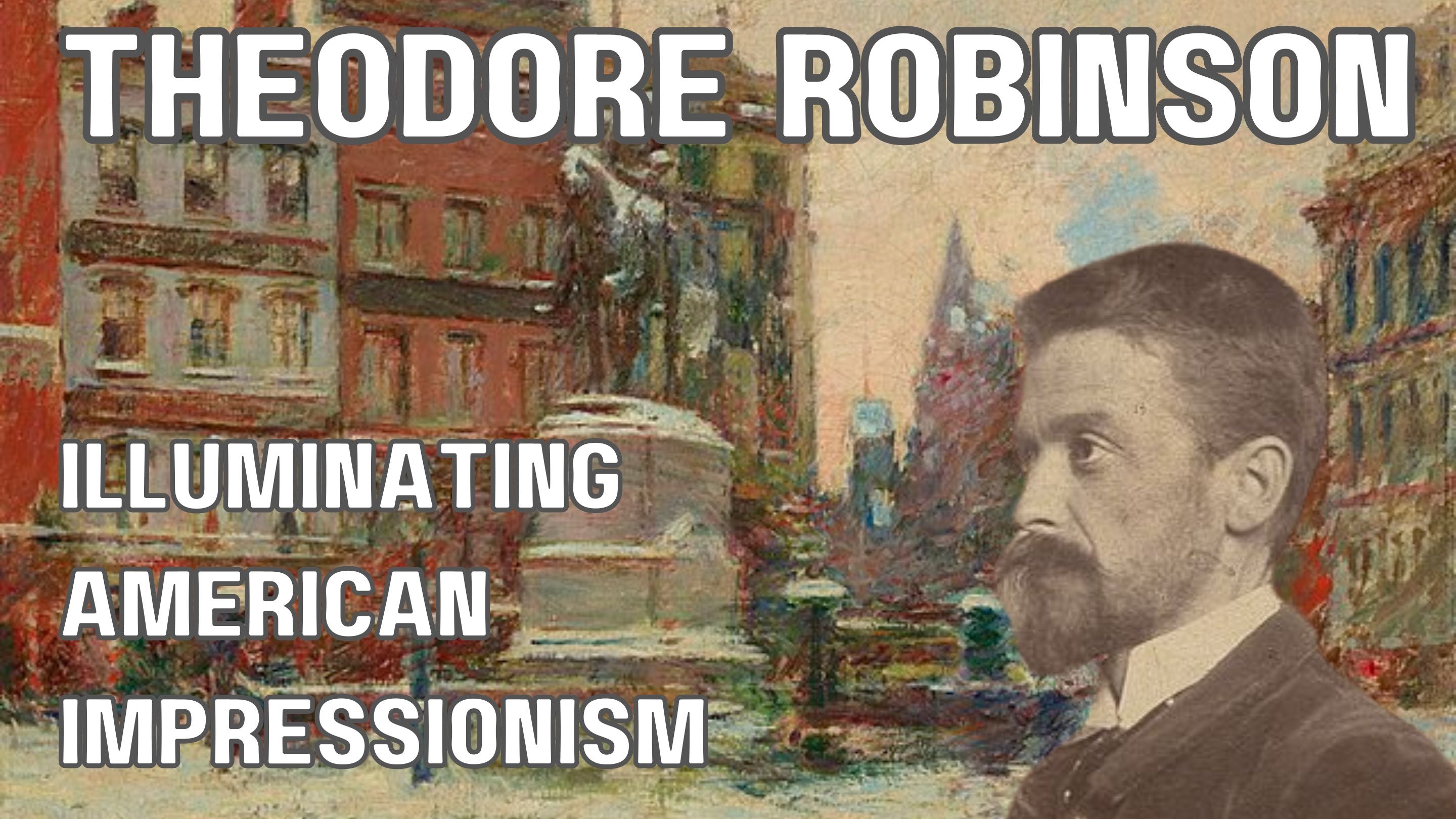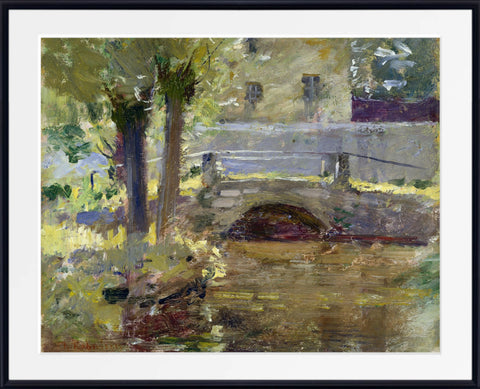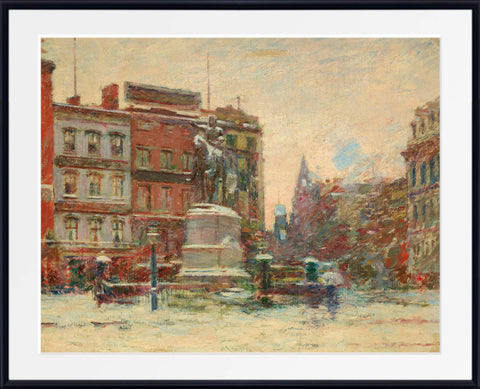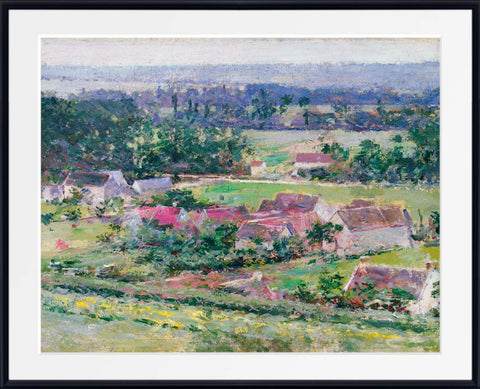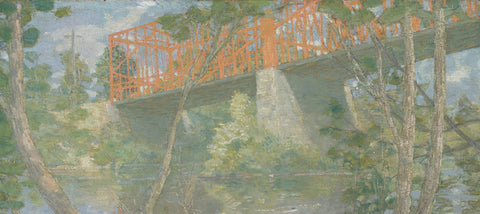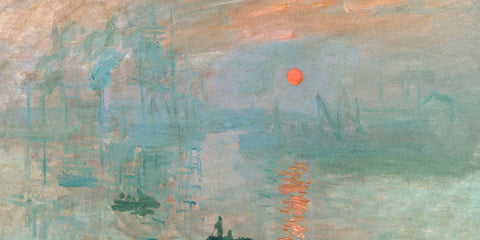Table of Contents:[hide]
Theodore Robinson, a luminary in the American Impressionist movement, stands as a testament to the fusion of artistic innovation and cultural evolution in the late 19th century. This article delves into the life, works, and enduring influence of this remarkable artist.
Early Life and Influences
1.1 Birth and Background
Born on June 3, 1852, in Irasburg, Vermont, Theodore Robinson exhibited an early affinity for art. His family's move to Wisconsin in his formative years coincided with the Civil War's aftermath, exposing Robinson to a changing America.
1.2 Artistic Beginnings
Robinson's journey into the art world commenced when he enrolled at the Chicago Academy of Design. Under the tutelage of realist painter Carolus-Duran in the late 1870s, Robinson honed his skills and developed a passion for the en plein air technique that would become synonymous with Impressionism.
Giverny Connection
2.1 Bond with Monet
A pivotal chapter in Robinson's life unfolded in the artistic haven of Giverny, France. His association with Claude Monet deepened, with the two artists sharing not only a vibrant friendship but also influencing each other's work. This camaraderie laid the foundation for Robinson's adoption of the distinctive Impressionist style.
2.2 Giverny Art Community
Giverny, a magnet for pioneering artists, nurtured Robinson's creativity. The idyllic landscapes and the play of light captivated him, shaping his oeuvre. The Giverny art community became a crucible for experimentation, inspiring Robinson to infuse his work with the spirit of the French Impressionist movement.
Artistic Style and Techniques
3.1 Embrace of Impressionism
Robinson's artistic evolution is marked by a deliberate departure from traditional styles. He embraced Impressionism's emphasis on capturing fleeting moments, employing loose brushstrokes and a vibrant color palette.
3.2 En Plein Air Mastery
Central to Robinson's technique was the en plein air approach, painting outdoors to capture the essence of light and atmosphere. This method became a hallmark of American Impressionism and a key component of Robinson's artistic identity.
Masterpieces
4.1 Union Square, Winter
One of Robinson's masterpieces, "Union Square, Winter," encapsulates the artist's ability to weave urban scenes with the poetic beauty of Impressionism. The canvas immortalizes a snowy day in 1890s New York City, showcasing Robinson's adeptness at infusing life into his surroundings.
4.2 Giverny
Painted during his third summer in the village, Giverny serves as a quintessential showcase of the technique that established Robinson's reputation in America. Positioned on a hillside overlooking the Seine valley, he skillfully adjusted his easel to capture multiple perspectives of the rural landscape. While the robust composition and precise delineation of architectural elements reflect Robinson's academic training, the vibrant violet-and-green palette and the adept, summarily treated light-dappled foliage unveil his immersion in Impressionism. In Giverny, Robinson skillfully emphasizes parallel diagonal lines radiating to the left of the picture plane, converging near the canvas's top. Executed en plein air, this masterpiece captures the immediate brilliance of sunlight and warm country hues—a technique undoubtedly influenced by his time with Monet.
Legacy and Impact
5.1 Influence on American Impressionism
Robinson's legacy extends beyond his canvases. As a founding member of the Society of American Artists and an advocate for Impressionism, he played a pivotal role in introducing and popularizing the movement in the United States.
5.2 Teacher and Mentor
Robinson's impact is also felt through his role as a teacher. His students, including renowned artists like John Singer Sargent, absorbed his innovative approach and carried forward the torch of American Impressionism.
FAQs: Theodore Robinson
6.1 How did Theodore Robinson contribute to American Impressionism?
Robinson was a key figure in popularizing Impressionism in the United States. His paintings, marked by vibrant colors and en plein air techniques, showcased the movement's ethos, influencing a new generation of American artists.
6.2 What is Robinson's most famous artwork?
"Union Square, Winter" is widely regarded as one of Robinson's masterpieces. This painting captures the beauty of a snowy day in New York City and highlights his skill in blending urban life with Impressionist aesthetics.
6.3 How did Robinson's association with Claude Monet impact his work?
Robinson's bond with Monet was transformative. The French master's influence is evident in Robinson's adoption of the en plein air technique and a heightened sensitivity to the effects of light, giving a distinctive Impressionist quality to his later works.
6.4 What was Robinson's contribution to the Giverny art community?
Robinson's presence in Giverny enriched the art community, fostering a cross-cultural exchange among artists. The picturesque landscapes and vibrant atmosphere inspired Robinson to experiment with his style, contributing to the evolution of Impressionism.
6.5 How did Theodore Robinson's legacy endure over time?
Robinson's legacy is multifaceted. His influence on American Impressionism is evident in the continued popularity of the movement. As a teacher, his impact is seen in the artistic lineage of students who carried forward the principles he championed.
Conclusion
Theodore Robinson's artistic journey is a narrative of evolution, experimentation, and profound influence. From the scenic landscapes of Giverny to the snowy streets of New York, Robinson's brushstrokes continue to resonate, shaping the course of American Impressionism. His legacy lives on, an indelible mark on the canvas of art history.
Prints and Canvas Panels

